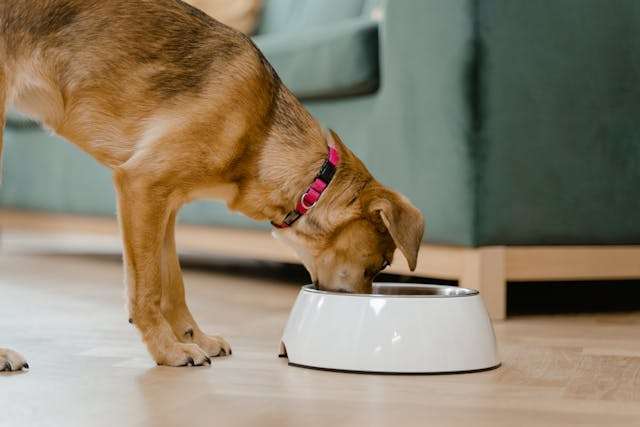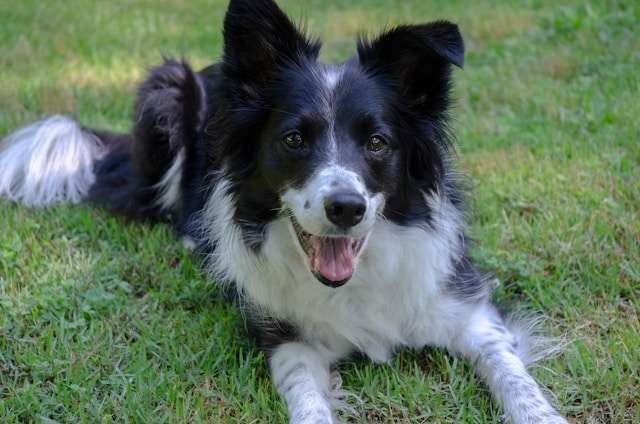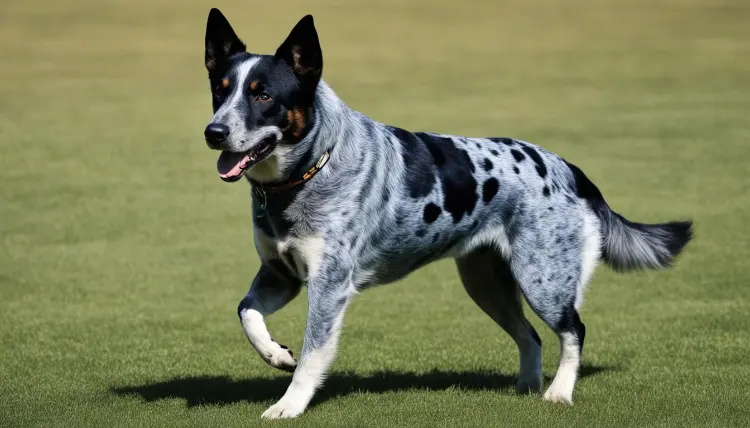Best Puppy Food for Large Breeds [Updated for 2025]
Best Puppy Food for Large Breeds. Finding the best puppy food for large breeds made a huge difference in my dog’s life. Savannah, my gentle giant, grew up into a healthy, happy companion because I paid close attention to her nutrition from day one.
I noticed how her energy and learning blossomed the moment we settled on a food that supported both her body and mind.
A good diet does more than just help puppies grow strong bones, it also shapes how well they take to dog obedience training and online dog training.
The right dog food gives large breed pups the stamina to learn and the focus they need for lessons, especially during the fast-growing months.
As Savannah thrived, so did her ability to pick up commands, proving that food, health, and {dog training} always go hand-in-hand. If you’re looking for tips on the nutrients that really matter in your pup’s life, the Puppy Nutrition Guide is a great place to start for clarity and confidence in your choices.
Why Large Breed Puppies Need Special Nutrition
Raising a large breed puppy like Savannah taught me that size truly changes everything, especially when it comes to nutrition. Larger pups have different bodies, different growth rates, and different risks.
Picking the best puppy food for large breeds is not just about bigger kibble, it’s about giving your dog the nutritional tools to grow up strong, steady, and healthy.
If you’re committed to dog obedience training or even jump into online dog training, the right nutrients lay the best foundation for learning and lifelong health.
Understanding Large Breed Puppy Growth Needs
 Photo by cottonbro studio
Photo by cottonbro studio
Large breed puppies, like Savannah, don’t just get bigger than other dogs—they grow in unique ways. These pups have longer growth periods, which puts a lot of pressure on their developing bones and joints. That’s why their diets can’t mimic what works for smaller dog breeds.
Here’s what makes their growth so different:
- Bone Growth: Large breed puppies have bones that grow quickly but need to do so in a controlled way. Too much food or the wrong balance of minerals like calcium and phosphorus can speed up bone growth, leading to weakness or deformity.
- Muscle Development: These pups build a lot of muscle as they grow. They need higher-quality protein, but not in excess—an overabundance may store as fat instead of promoting healthy muscle.
- Metabolism: Unlike small breeds, big puppies have slower metabolisms for their size.
- Energy Needs: They require calories to match a steady and moderate growth pace, which helps prevent obesity and supports balanced development.
Feeding your puppy a diet made specifically for their size means you’re backing up their growth with the right kind of fuel. You can find more detailed advice about nutrients in resources like Nutritional Requirements of Large and Giant Breed Puppies and see how a slower, controlled approach is best for large breeds in Large Breed Puppies: Rapid Growth Is Not Optimal Growth.
Preventing Developmental Orthopedic Diseases
One of the biggest worries with large breeds is joint and bone problems like hip dysplasia. Savannah’s vet warned me early that fast or unbalanced growth raises the risk of conditions that could affect her comfort for years.
How does the right dog food help prevent these problems?
- Balanced minerals keep bones from growing too fast or soft.
- Controlled calories help puppies avoid carrying too much weight, which strains still-developing joints.
- Appropriate protein levels ensure muscle builds as it should without prompting rapid, uneven growth.
Puppies fed adult formulas or regular puppy foods can get the wrong ratios of these nutrients, which can lead to long-term joint issues. Diet matters just as much as genetics when it comes to orthopedic health.
Common risks to watch out for in large breeds include:
- Hip and elbow dysplasia
- Osteochondritis dissecans (OCD)
- Panosteitis
- Hypertrophic osteodystrophy
The connection between diet and orthopedic disease is strong. For more insight, take a look at articles like Developmental orthopedic disease: a clinical approach and Preventive Measures in Canine Orthopaedic Medicine to see just how much good nutrition can protect your not-so-little one’s growing frame.
If you want to dive deeper into how food impacts long-term mobility, check out the dog food reviews section. It gives honest feedback on the best puppy food for large breeds and ties nutrition directly to joint health and comfort—something every dog parent wants for their future gentle giant.
Key Ingredients in the Best Puppy Food for Large Breeds
Choosing the best puppy food for large breeds, like what I did for Savannah, means paying attention to every detail on the label.
Puppies of larger dog breeds need a nutritional plan that’s tailored to help bones, joints, and muscles grow at the right pace. If you want your dog to thrive in training and enjoy a long, active life, knowing the key ingredients can set you up for success.
Balanced Protein and Fat: Why Moderate Protein and Fat Content is Ideal for Steady Growth in Large Breed Puppies
Large breed puppies have a slower, longer growth curve than small breeds, and that changes what their bodies need. Too much protein or fat can lead to rapid weight gain and unsteady growth, which isn’t good for their joints and bones.
- Moderate protein (around 22-24% for most large breed formulas) supports lean muscle without rushing growth.
- Fat should stay between 8-12%, fueling playful energy while keeping weight under control.
I watched Savannah thrive on a diet that didn’t overload her system. Her energy was steady for walks, play, and dog obedience training, and her weight stayed in the healthy range. If you’re unsure about these numbers, resources like Nutritional Requirements of Large and Giant Breed Puppies break it down in detail.
Calcium and Phosphorus Ratios Matter: Explain the Risks of Improper Mineral Balance and How it Impacts Skeletal Health
 Photo by MART PRODUCTION
Photo by MART PRODUCTION
Getting minerals right is probably the most important factor for large breed puppy food. The balance between calcium and phosphorus allows bones to grow strong, yet slowly enough to avoid deformities.
- Too much calcium or the wrong ratio with phosphorus can lead to serious joint and bone issues later in life.
- Correct ratios (usually about 1.2-1.5 parts calcium to 1 part phosphorus) help prevent problems like hip dysplasia and other orthopedic diseases.
I remember double-checking these numbers for every bag of dog food Savannah ate. It was worth the effort, because proper mineral balance is one of the best ways to protect your puppy’s future mobility and comfort. For a deep dive on this, explore Large Breed Puppies: Rapid Growth Is Not Optimal Growth, which shows how mineral imbalances can harm developing skeletons.
Added Nutrients for Joint Support: Mention Glucosamine, Chondroitin, DHA, and Antioxidants
A good large breed puppy formula often goes further than just protein and minerals. Ingredients for joint support and brain development are the unsung heroes in many of Savannah’s favorite foods.
When you’re checking dog food reviews, look for these key extras:
- Glucosamine and chondroitin: Help build and repair cartilage in growing joints.
- DHA (an omega-3 fatty acid): Supports brain and vision, both crucial for training and learning.
- Antioxidants: Defend against cell damage and support the immune system.
I noticed Savannah seemed sharper in her online dog training sessions and bounced back quickly from energetic play. Foods with these add-ons can make a real difference in long-term health and behavior.
For even more tips on which ingredients can promote joint health and optimize your puppy’s growth, check the expert breakdowns in this dog food reviews section. The right nutrients don’t just show up in growth charts, they show up in the way your dog learns, moves, and enjoys each day.
How to Choose: Evaluating Dog Food Brands for Large Breeds
Picking the best puppy food for large breeds can feel overwhelming. I remember reading bag after bag, wanting the best for Savannah as she grew into her big paws. Making the right call is not just about flashy promises or the brand on the bag—it’s about knowing what to look for and what to question.
When you learn how to read between the lines of dog food reviews and labels, you help your puppy stay healthy, focused for dog obedience training, and ready for all the lessons you want to teach.
Decoding Dog Food Reviews: How to Interpret Reviews and What to Prioritize When Reading About Different Dog Food Brands
Online dog food reviews give you real-life feedback, but not all reviews weigh the same. I always scan for patterns: do several owners of large breed puppies mention steady growth, bright energy, or joint comfort?
Any dog food that’s left multiple big pups lethargic or with stomach troubles moves to my “no-go” list.
Here’s what to focus on as you read reviews:
- Look for details about large breed growth: Some foods are great for small dogs but not ideal for big pups who need slower, controlled development.
- Search for feedback from people with active, learning puppies: Stamina, energy and sharpness often show up in honest reviews, and that’s key for both play and dog obedience training.
- Weigh opinions from trusted sources: Not all reviews are created equal. I use respected platforms and expert analysis, like the insight found in How We Rate Dog Food | Frequently Asked Questions.
- Note comments on skin, coat, or digestive issues: Consistent complaints (or praise) often point to a food’s quality.
Remember, one or two bad reviews don’t define a food, but repeated issues should raise a flag. Savannah did best on brands with a proven record for large breeds, especially those that made learning and play feel effortless.
Red Flags on Dog Food Labels: Ingredients to Avoid in Dog Food for Large Puppies
 Photo by adrian vieriu
Photo by adrian vieriu
Dog food labels can get tricky, but spotting red flags will help you steer clear of brands that may not support your puppy’s growth and training. Common problem ingredients can slow progress in online dog training or even cause health setbacks over time.
Key ingredients to avoid include:
- Generic meat meals and animal by-products: Labels like “meat meal” or “animal fat” are too vague. You want clear, single-source proteins (like chicken or lamb).
- Chemical preservatives: Ingredients such as BHA, BHT, and ethoxyquin have been linked to health concerns.
- Sugars and fillers: Corn syrup, excess corn, and soy can lead to weight gain and allergies, which are especially risky for large breeds that need to avoid fast growth.
- Artificial coloring and flavoring: These do nothing for your puppy except add potential irritants.
Want to dig deeper into reading labels? Check out tips from resources like Decoding Dog Food Labels: Unveiling the Deception and a helpful breakdown on red flag dog food ingredients.
When I double-checked Savannah’s food for these ingredients, I felt relieved knowing she had what she needed for steady growth, clear focus, and boundless energy. For more tips on how these choices shape your puppy’s future, the puppy nutrition guide has detailed answers specifically for large dog breeds.
Feeding Practices to Complement Dog Training
The way we feed our puppies can shape not just their bodies, but also their minds and behaviors. I’ve seen firsthand with Savannah how routine and the right treats can make dog obedience training smoother.
Developing best practices for feeding—especially for large breeds needing steady growth—goes hand-in-hand with success in both online dog training and classic in-person lessons. The “best puppy food for large breeds” isn’t just about nutrients; it’s about how we use mealtime and food rewards as part of the training routine.
Meal Timing and Consistency in Training: How Scheduled Feeding Assists with Dog Trainig and Predictability
Structure is everything for puppies. Feeding on a set schedule shows our dogs what to expect and when. Savannah learned routines quickly, which helped her stay calm and focused in dog obedience training sessions. Large breed pups in particular benefit from meal consistency because it:
- Sets clear boundaries for eating and rest.
- Reduces anxiety around food, making puppies less likely to guard or beg.
- Helps predict potty breaks, making house-training easier.
When you feed your pup at the same times each day, you build trust. Your dog learns to anticipate rewards, making it easier to follow commands and settle quickly into new routines. This predictability translates directly into better focus during online dog training, as your puppy knows when to expect food and when to pay attention.
 Photo by MART PRODUCTION
Photo by MART PRODUCTION
Another benefit of set meal times? You gain insight into your puppy’s hunger cues and digestive rhythm. This is key for preventing overeating, which can affect large breed pups more than smaller breeds. I always paired Savannah’s mealtimes and training windows so she was hungry but not overly excited, helping her stay motivated and responsive.
Using Food as a Positive Reinforcement Tool: Practical Ideas for Integrating Food Rewards into Online Dog Training and In-Person Sessions
Food is a powerful motivator—especially when training large breed puppies who might otherwise get distracted or tired. I found the best puppy food for large breeds also makes the best high-value reward. Integrating food into both online dog training and in-person sessions keeps lessons engaging and fun.
Here’s how I use food in training with Savannah:
- Small, soft treats: I break her kibble or use training-specific treats to reward good behavior instantly. Quick rewards keep the lesson moving and help connect the action with the treat.
- Reserve special treats for tough commands: When working on harder behaviors, I switch up the reward to something extra tasty. This builds excitement for learning new skills.
- Mix regular kibble in with special treats: This keeps calories in check and ensures she’s getting her “best puppy food for large breeds” nutrition throughout training.
- Use meal portions as rewards: Sometimes, I’ll spread her dinner throughout a training session, letting her “work” for her food. This creates a strong bond and helps keep her focused during longer lessons.
Using food rewards works just as well for online dog training. Most digital programs encourage small, fast rewards to encourage participation and give feedback in real time. If you want ideas for using food rewards specifically tailored to the unique traits of certain dog breeds, you can explore interesting breed details like these Akita dog interesting facts.
Remember, stay consistent with treat sizes and factor them into your puppy’s daily calories. The “best puppy food for large breeds” gives your dog the stamina for each session while the way you deliver these meals—or rewards—fuels their excitement for learning.
For more advanced insight into how nutrition and positive reinforcement come together, dog food reviews like those in the dog food reviews section offer practical examples and honest experiences from fellow large breed owners.
Frequently Asked Questions About Large Breed Puppy Nutrition
Feeding a large breed puppy like Savannah comes with some head-scratching moments. The stakes feel higher because growth is fast, bodies are bigger, and choices matter more for lifelong health.
Here I’ll address the most common questions owners ask about the best puppy food for large breeds, sharing what I learned while raising my gentle giant. If you want to make every meal count, keep reading for clear, actionable advice.
How long should my large breed puppy eat large breed puppy food?
Large breed pups need special nutrition longer than smaller dog breeds. The goal is steady, controlled growth to reduce the risk of joint and bone issues.
Most experts suggest feeding a large breed puppy food until at least 12 to 18 months of age, or until your dog’s growth plates close. Savannah stayed on her puppy formula until her vet confirmed she was done growing.
Switching too soon can rob your puppy of the nutrients needed for safe development. To see what the pros recommend, the AKC’s guide to large breed diets offers practical timelines and tips.
What makes large breed puppy food different from regular puppy food?
Large breed formulas stand out because they have:
- Controlled calcium and phosphorus to support slow, strong bone growth
- Lower fat and calorie levels to avoid fast weight gain
- Moderate protein to fuel lean muscle, not just mass
Feeding regular puppy food can overload your big pup, speeding up growth spurts that strain their joints and muscles. Savannah’s food always listed clear mineral ratios and labeled itself for “large breed puppies.” Look for the same when you shop or compare dog food reviews.
Can I use treats or table scraps safely with a large breed puppy diet?
Treats are a great training aid, especially for dog obedience training and online dog training, but calibration is key. For large breed puppies, treats should make up no more than 10% of their daily calories.
Choose options that complement your dog’s main food, like small pieces of their puppy kibble or healthy, low-calorie bites. Avoid high-calcium chews or fatty human foods, which can upset the mineral balance. Savannah’s treats were usually pieces of her regular food served during play or training.
For more on using food as a positive force, my tips on feeding practices to complement dog training offer ideas to keep training sessions effective but balanced.
What are the signs my large breed puppy’s food isn’t a good fit?
Sometimes a food just doesn’t work for your pup, and it shows. Red flags often include:
- Loose stools or digestive upset
- Slow growth or too-fast growth (check with your vet if unsure)
- Dull coat or skin issues
- Low energy, or “crashing” after activity
Savannah had a brief bout of digestive issues before I found the right food for her, so I learned to check the dog food reviews and adjust quickly when needed.
Don’t stick with a food that leaves your puppy feeling off, especially if you’re investing in dog obedience training or want your dog to stay motivated during online dog training.
How often should I feed my large breed puppy each day?
Large breed puppies grow so quickly that they need food spread out for best absorption and stable energy. I put Savannah on a routine of three meals per day until she hit adulthood.
That routine helped her avoid spikes in hunger, kept her moods balanced, and improved her focus for training.
Many sources, like the AKC’s puppy feeding guide, also suggest three to four meals a day, reducing to twice daily as your puppy matures.
What about supplements—are they safe or necessary?
Most high-quality large breed puppy foods are complete and balanced. This means your dog gets all necessary nutrients in every bite, without extra pills or powders.
Supplements—like calcium, phosphorus, or protein powders—are usually not necessary and can actually cause harm if they throw the diet off balance.
If your vet recommends a specific supplement for joint support or another health reason, follow their advice. Savannah thrived on her complete food with only occasional fish oil (from her vet’s suggestion) for her coat.
If you have more questions about the best puppy food for large breeds, check out this detailed FAQ guide with research-backed answers for large pups. Don’t forget to also compare the best reviewed brands at Dog Food Advisor’s large breed puppy picks for more confidence in your choices.
 Photo by MART PRODUCTION
Photo by MART PRODUCTION
For more hands-on advice and my personal food picks for Savannah, take a look at the full dog food reviews page. It’s packed with real experiences from owners who want their pups to thrive, not just survive.
Key Takeaways
When searching for the best puppy food for large breeds, it’s easy to feel pulled in every direction by brand promises and ingredient lists.
As someone who’s watched Savannah, my own large breed pup, thrive on a balanced diet, I know how much these choices matter. Below are the real-world lessons and highlights that every dog owner should keep in mind.
The Right Nutrition Supports Healthy Growth
Choosing puppy food designed for large breeds means your dog gets nutrients that help develop strong joints, steady bones, and lean muscle without unwanted weight gain. The best formulas control protein, fat, and calcium levels so big pups grow at a safe pace, reducing the risk of future joint issues.
- Balanced protein and fat give your puppy energy and help build muscle, while supporting both learning and play.
- Controlled calcium and phosphorus prevent bone problems and promote steady development.
- Essential extras like glucosamine, chondroitin, and DHA set your pup up for healthy training and active adventures.
Consistency Makes a Difference in Training and Health
Sticking to regular feeding times helps large breed puppies pick up routines, making both house training and dog obedience training simpler.
Dogs like Savannah thrive with a clear schedule, which creates predictability and boosts focus—especially important if you’re considering online dog training or new skills each week.
- Meal timing keeps energy steady throughout the day.
- Consistent routines encourage better learning and smoother transitions during training sessions.
Not All Dog Foods Are Created Equal
Scanning dog food reviews and talking to other large breed dog owners showed me how much variety exists between brands.
Top-rated large breed puppy foods stand out for their ingredient quality and the clear way they list protein and minerals. Generic or vague ingredients, low-quality fillers, and undefined meat meals are warning signs to skip.
- Single-source proteins are the gold standard for your large breed puppy’s main meals.
- Avoid artificial preservatives and coloring to minimize health risks and reactions.
- Spot red flags in reviews that mention digestive upset, skin problems, or poor growth; repeated comments can help steer your shopping.
To add another perspective, you can find a thorough review and ranking of the latest options in the Best Large Breed Puppy Foods 2025 list.
Your Feeding Choices Impact Lifelong Health
The food you pick today shapes your dog’s health and training for years to come. Large breed-specific puppy foods support not only sound physical development but also the energy, stamina, and sharpness needed during active training periods.
Keeping Savannah on these foods made a clear difference in her energy levels, learning ability, and weight management.
- Proper feeding habits prevent issues like fast growth or obesity, common in bigger breeds.
- Choosing the best puppy food for large breeds gives your dog the best start for both play and learning.
For owners who want even more insight straight from veterinary experts, the article on what vets recommend for large breed puppies can help you make sense of all the options.
With every bag of food, meal routine, and training session, you shape your puppy’s path. Paying close attention to nutrition, reviews, and your dog’s unique needs makes a world of difference—just as it did for Savannah.
Frequently Asked Questions About the Best Puppy Food for Large Breeds
Every time I talk with a new puppy parent, a few questions always pop up about feeding big pups like Savannah. It makes sense—the stakes feel higher with large breeds, and nutrition affects everything from energy levels to joint comfort. Below, I’m sharing the most common questions about the best puppy food for large breeds, along with answers you can trust.
How long should my large breed puppy stay on large breed puppy food?
Most large breed puppies need specialized puppy food longer than smaller breeds. The steady growth these pups need helps prevent joint problems down the road.
I kept Savannah on large breed puppy food until she was about 16 months old, but your veterinarian can help confirm the best time to switch.
Growth plates usually close between 12 and 18 months. Switching too soon could leave your pup missing out on essential nutrients. You can read what the experts say in the AKC’s best dog food for large breeds guide.
Why is large breed puppy food different?
Large breed puppy food is all about controlling the rate of growth and protecting delicate joints and bones. These foods have:
- Moderated calories and fat
- Precise calcium and phosphorus levels
- Carefully balanced protein levels
Regular puppy food is made for smaller, quicker-growing pups. Feeding a food that’s not sized for your dog’s body and growth pattern risks obesity and skeletal issues. See why those specific nutrients matter in this handy nutritional guide for large and giant breed puppies or compare formulas in thorough dog food reviews.
How many meals a day should my large breed puppy eat?
Big puppies do best with smaller, frequent meals. When Savannah was little, she ate three times a day to balance her energy and avoid hunger spikes. By about six months, many large breed pups can transition to two meals per day.
Feeding several small meals instead of one or two large servings helps with digestion and keeps their energy steady, which supports focus in dog obedience training.
The Purina Institute offers a quick breakdown in its guide to feeding large and giant breed puppies.
Can I give my large breed puppy treats or human food?
Treats are great for dog trainig and positive reinforcement, but use them sparingly. Treats should make up less than 10% of your puppy’s calories each day.
Healthy options include pieces of their own kibble or dog-safe fruits and veggies (think carrots, not grapes). Human food like table scraps isn’t a good fit for health or training—some can even be harmful.
Stick with treats that match the main food’s balance and avoid adding extra calcium or fat.
What are signs my puppy’s food isn’t a good fit?
Every dog is unique, so watch for these clues that your large breed puppy’s food isn’t the best puppy food for large breeds for their needs:
- Loose stools or vomiting
- Signs of rapid growth (growing tall too fast or stumbling)
- Dull coat or flaky skin
- Lethargy or loss of enthusiasm for play or training
When Savannah had digestive upsets, I switched to a top-rated large breed puppy food and saw improvements within a few weeks. Don’t be afraid to compare or change foods if needed, and always check dog food reviews for first-hand experiences.
Are supplements necessary if I’m feeding a large breed-specific puppy food?
Most high-quality large breed puppy foods include all the vitamins and minerals your dog needs. Giving extra supplements, especially calcium or protein powders, can unbalance the food and hurt your puppy’s health.
Only supplement if your vet recommends it for a specific reason. Savannah did fine on her dog food alone, with maybe an occasional flavored omega-3 for her coat under our vet’s guidance.
Where can I find more trusted information or compare top large breed foods?
If you want to dig deeper into specialized feeding, you can find peer advice and evidence-backed tips in this detailed FAQ resource: Nutrition for the Large-Breed Puppy. For a quick view of top-rated brands that large breed owners recommend, Dog Food Advisor has a list of the best large breed puppy foods for 2025.
For side-by-side comparisons or to see what other large breed parents think, check out the latest feedback in the dog food reviews page. From Savannah’s story to other happy pups, you’ll find plenty of real-world advice to guide your decision.
Conclusion
Choosing the best puppy food for large breeds means more than filling a bowl—it’s about fueling every step of your dog’s growth and training. Healthy nutrition gave Savannah the stamina for dog obedience training, sharper focus for online dog training, and the strong bones needed for an active life.
The right mix of protein, balanced minerals, and added extras truly shaped her future, both on daily walks and during those proud moments in class.
Food choices build habits, health, and happiness. When you pick a quality dog food and stick to consistent routines, you help your puppy not just reach milestones, but truly enjoy the journey.
If you’re curious about how nutrition and training tie together, I encourage you to look at guides like the puppy nutrition guide for deeper insight.
Watching Savannah thrive has shown me the power of good feeding and proper dog trainig. Your pup can experience that same vibrant energy and eager learning—just give them the best start possible.
Thanks for joining me on this path to better health and happier training. If you have your own experiences or tips, I’d love to hear how your large breed puppy is growing strong with the right food and training.







